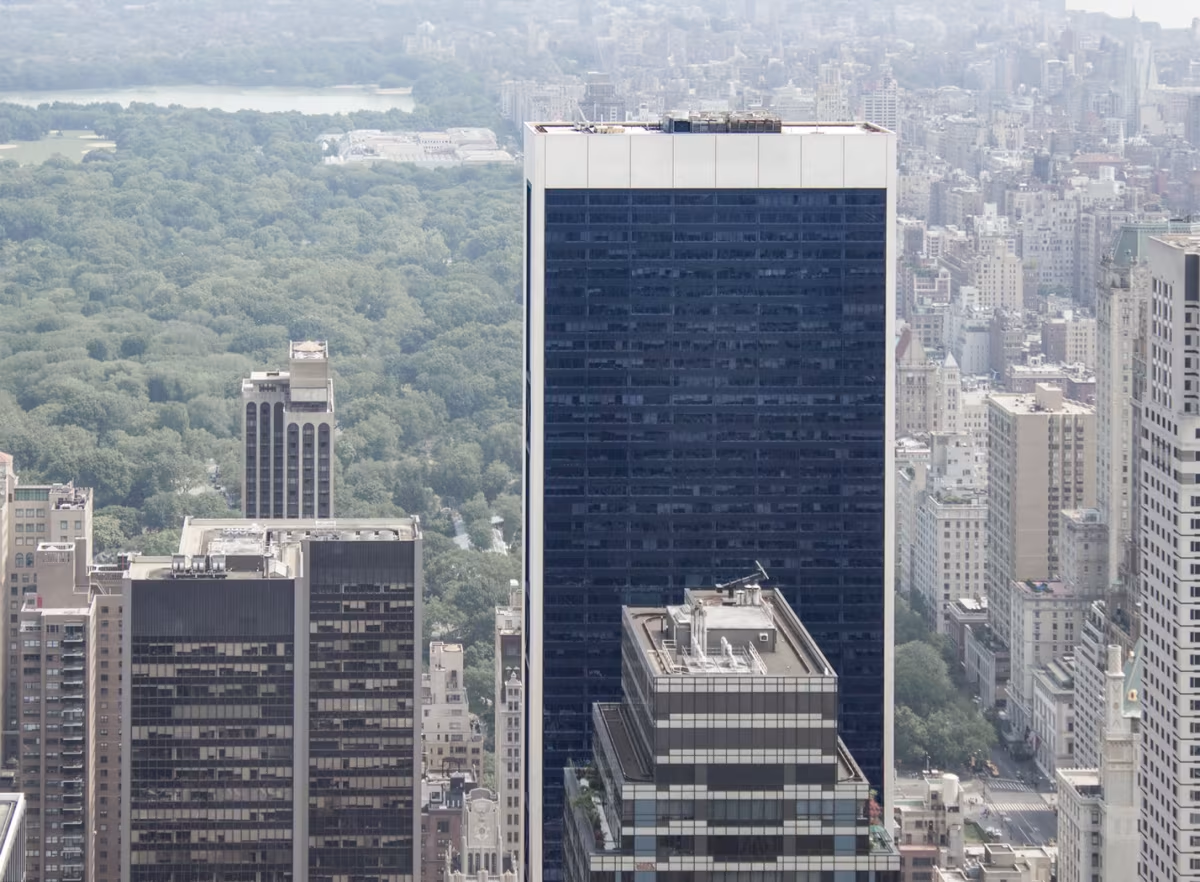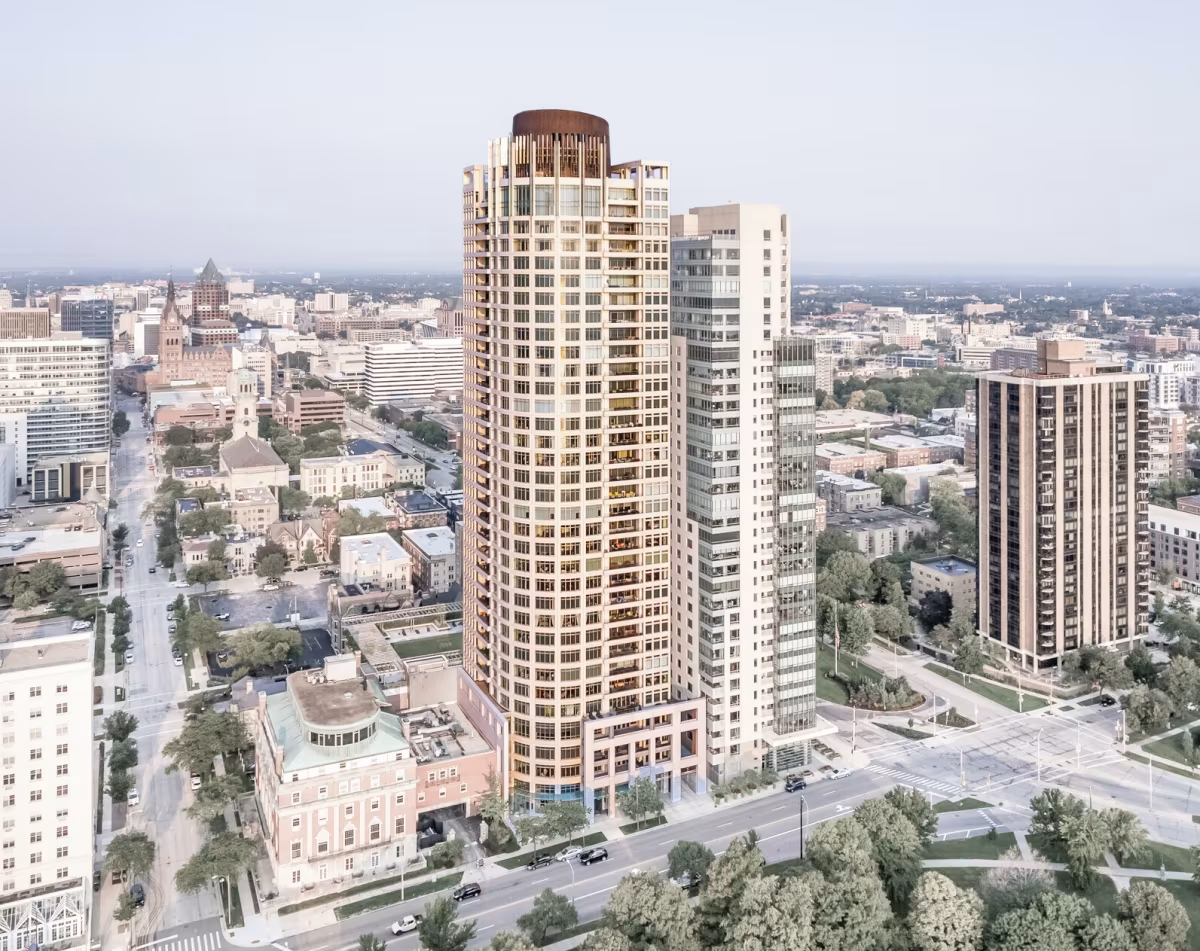Solow Building vs University Club Tower


Comparing the Solow Building and the University Club Tower is compelling because they were both designed by Skidmore, Owings & Merrill, yet they stand in different cities (New York, NY and Milwaukee, WI), and were completed over two decades apart.
What this will allow us to see, is how the same firm's approach adapted to different places in different periods of time.
Height & Size
The Solow Building is clearly the larger tower of the two, both in terms of height and number of floors. It rises to 673ft (205m) with 49 floors above ground, while the University Club Tower reaches 446ft (136m) with 34 floors above ground.
Of course, each project may have faced different briefs or regulatory constraints, which we don't really know about and could also explain the outcome.
Architectural Style
The Solow Building was designed in the Modern style, while the University Club Tower reflects the principles of Contemporary.
The Solow Building represents a late expression of the Modern, a style already in decline in 1974 when it was completed. By contrast, the University Club Tower followed the then mainstream Contemporary, embodying the dominant architectural direction of its time.
With 33 years between them, the comparison also reflects how quickly architectural priorities can shift from one dominant language to another.
Uses
The Solow Building is primarily commercial, while the University Club Tower is primarily residential.
The University Club Tower offers 53 residential units.
The University Club Tower also provides 106 parking spaces.
Structure & Facade
The two buildings opted for different structural and facade solutions.
The Solow Building uses a Trussed Frame system, which uses diagonal bracing in addition to beams and columns for stability, while the University Club Tower uses a Frame system, that relies on a regular grid of columns and beams to sustain its weight.
And when it came to the facade, the Curtain Wall went with a Curtain Wall facade, which uses a lightweight glass curtain wall hung from the structure, while the University Club Tower opted for a Modular facade, that employs prefabricated panels, often mixing solid surfaces with smaller windows.
| Solow Building | University Club Tower | |
|---|---|---|
| Skidmore, Owings & Merrill | Architect | Skidmore, Owings & Merrill |
| 1968 | Construction Started | 2004 |
| 1974 | Year Completed | 2007 |
| Modern | Architectural Style | Contemporary |
| Commercial | Current Use | Residential |
| 49 | Floors Above Ground | 34 |
| 1 | Floors Below Ground | 1 |
| 205 m | Height (m) | 136 m |
| Trussed Frame | Structure Type | Frame |
| Steel | Vertical Structure Material | Reinforced Concrete |
| Concrete And Steel | Horizontal Structure Material | Reinforced Concrete |
| No | Facade Structural? | Yes |
| Glass, Marble, Aluminium | Main Facade Material | Concrete, Glass |
| Solow Construction Co. | Main Contractor | J.H.Findorff & Sons |
| Solow Development Corporation | Developer | Mandel Group |
| Weidlinger Associates | Structural Engineer | Skidmore, Owings & Merrill |
| NY | State | WI |
| New York | City | Milwaukee |
| 9 West 57th Street | Address | 825 N Prospect Ave |